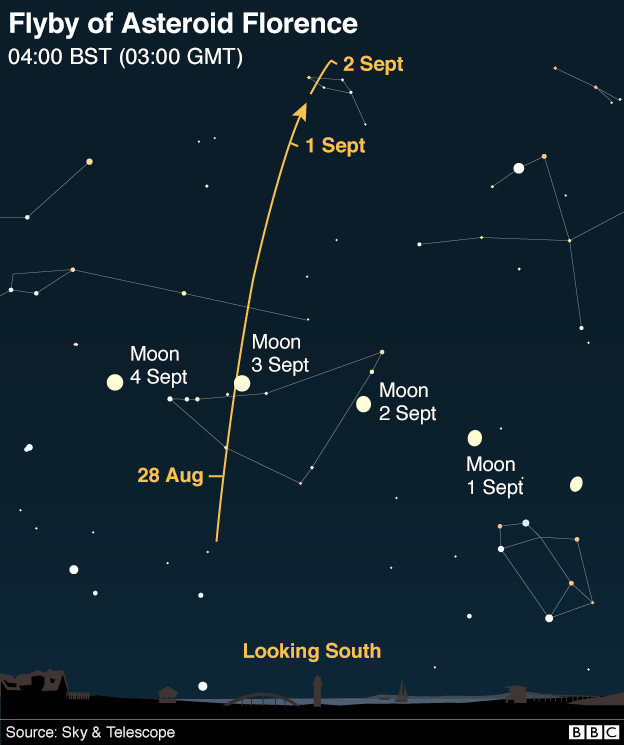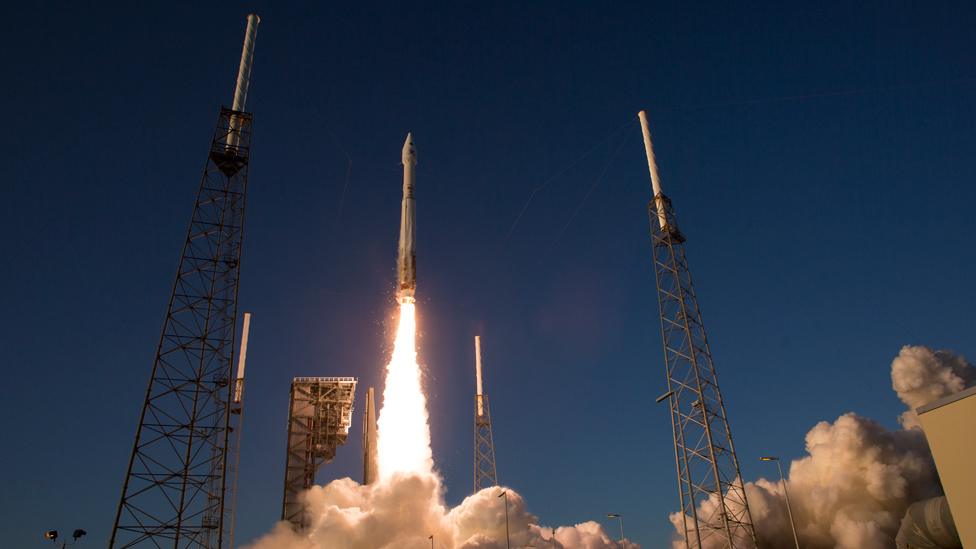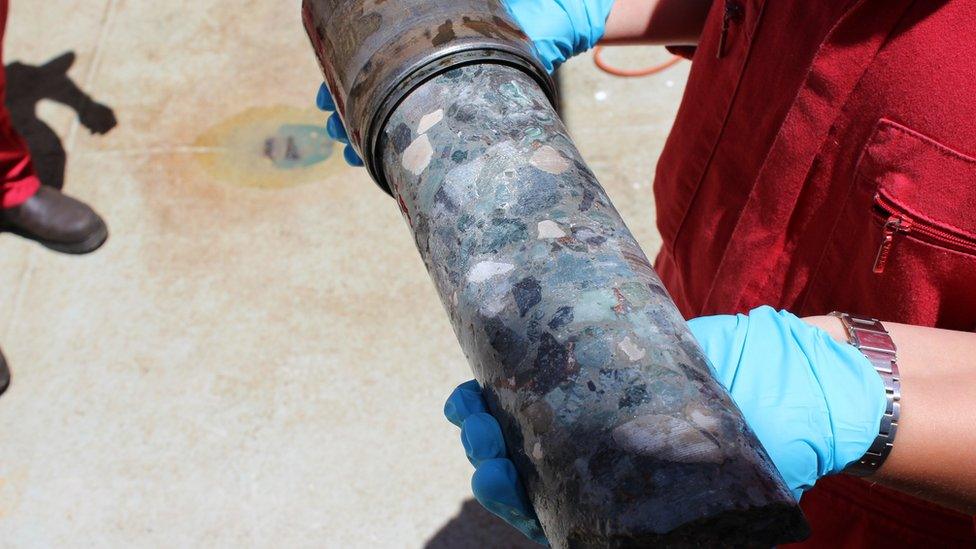Florence: Largest asteroid in century to safely fly by Earth
- Published

The largest asteroid in more than a century is set to pass by Earth at a relatively close distance of 4.4 million miles (7 million km), Nasa says.
Florence measures 2.7 miles (4.4km) in diameter and will not pose a threat to Earth for centuries to come.
While other asteroids have passed closer to Earth, they were all estimated to be smaller.
Asteroids are the rubble left over from the formation of the Sun and planets.
At its closest point, Florence - which was discovered in 1981 - will be at about 18 times the average distance, external between the Earth and the Moon.
"Florence is the largest asteroid to pass by our planet this close since the [American space agency] Nasa program to detect and track near-Earth asteroids began," Paul Chodas, manager of Nasa's Center for Near-Earth Object Studies, said in a statement., external
The 2017 encounter is the closest by this asteroid since 1890 and the closest it will ever be until after 2500, the US space agency added.
Scientists plan to study the asteroid up close, using ground-based radar imaging in California and Puerto Rico.
Amateur astronomers will also be tracking it, says Sky and Telescope Magazine, external.
The rock is relatively easy to see with good observing equipment, not just because it is large but also because it reflects more than 20% of the sunlight that hits its surface. The Moon in contrast has an average reflectivity of just 12%.
An object of Florence's size would have global effects were it to hit the Earth. Scientists believe they have now identified more than 90% of such monster rocks moving through space near our planet.
- Published9 September 2016

- Published18 November 2016
